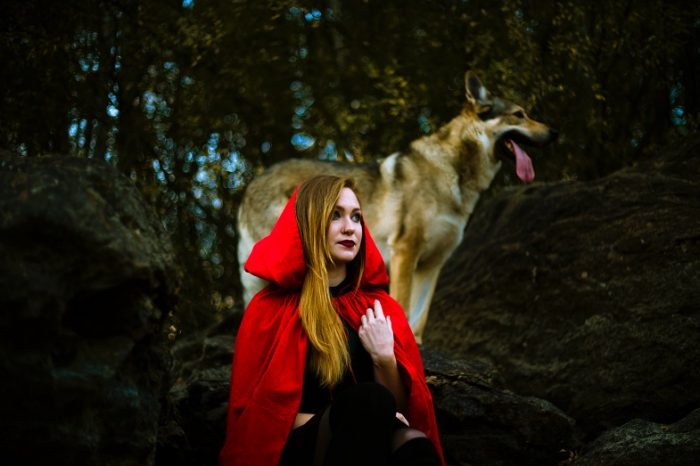“Fairy tales are more than true: not because they tell us that dragons exist, but because they tell us that dragons can be beaten.” ~ Neil Gaiman
~
Every night, my mother and father read me a story before bedtime.
These stories, usually fairy tales, always held my attention. While wrapped in sheets and blankets, I could be whisked away by Peter Pan to an imaginary land, without ever leaving my bedroom. In elementary school, I’d sit at my wooden desk and cling to the words of The Boxcar Children as my teacher read to the class.
The books followed the adventures of four orphaned children who lived in a boxcar—the eldest worked to buy food and supplies. Eventually, the children went to live with their grandfather. These tales enabled me to imagine a different living situation than my own.
Do you ever wonder why a story captivates us?
As children, we create imaginary worlds through the lens of a story and its characters. Consider the tale of Red Riding Hood—this story invites us to explore landscapes beyond our reality. We can wander into the woods carrying a picnic basket, picking wild flowers, and running into wolves that hide behind trees.
As an adult, this fairy tale has empowered me by proving that while some human truths remain the same, others can change over time. After I read The Company of Wolves—written by Angela Carter, who is known for her magical realism—I noticed a recurring pattern found in both the childhood and adult version of this story. Things that seem safe in our lives can very quickly become compromised by dangerous encounters and the anxiety they bring.
While reading the original Little Red Riding Hood and The Company of Wolves, I began to notice myself in the stories’ archetypes. For example, the young female character gets lost in the woods on the way to her grandmother’s house. The woods can be seen as the child’s psyche, young and naive. And the wolf she encounters? He can be seen as our human instincts and the struggles we face in our lives.
Both versions of this story—read as a child and an adult—taught me valuable lessons about how to approach predators, prey, and safety, particularly as a woman. Situations can become dangerous in a moment, and our ability to respond well depends on how well we’ve prepared.
Years ago, as a young woman, I left work and walked into a well-lit parking lot. I had the sense that someone was behind me, so I glanced over my shoulder and noticed a large man following me. I walked off the sidewalk near my office building heading aimlessly toward a parked car that was not mine.
I zigzagged. He zigzagged behind me. I began focusing on the thoughts running through my mind, which included: “I can’t let him snatch me and put me in his car.” My stomach knotted and my heart raced. He was right behind me. I sensed the heat off his body and turned around with my black umbrella in my right hand. I pointed it at him—as if it were a weapon—and clearly asked him what he wanted. He replied, “I think I know you.”
I didn’t know him. And in that exact moment, I took off running back toward my office building and asked for security.
Another time, my tire completely deflated while I was driving on the highway. I was two hours from home and found myself parked on the side of the road. I watched as a minivan pulled up behind my car and a tall, white man got out. He had wispy black hair and was wearing white jeans. My first thought was, “Okay, just breathe.” But I could feel my hand start to tremble.
I got out of my car as he approached, and when he asked if I was in college, I told him that I was on my way home. He said he had seen my tire was flat a few miles back and insisted that I let him give me a ride somewhere. I thought to myself, “Do people just follow other people on the interstate?” I firmly turned down his offer for a ride and waited for roadside assistance instead.
Without my love of fairy tales, I may not have been prepared or confident enough to know how to handle the “wolves” in my life. But these stories offer us messages and life lessons that can greatly impact our experiences. Sometimes we’re the wolf (instinctive) and other times we’re Red Riding Hood (keenly curious)—and yet other times we’re able to merge those archetypes and save ourselves.
~












Read 0 comments and reply